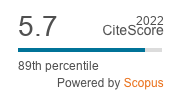Larvae of the house fly, Musca domestica L., are a suitable protein source for incorporation into animal feed. In Sub-Saharan Africa, one of the methods to produce house fly larvae is to expose a substrate to attract naturally-occurring adult flies for oviposition. A production system, described herein, was set up in Mali and the potential of the method was assessed by studying the influence of various parameters on yields. Of four substrate mixtures tested, three, i.e. chicken manure alone, sheep manure and coagulated blood, and chicken manure and coagulated blood provided average yields of 124-144 g of fresh larvae per kg of dry substrate, just three days after the exposure of the substrate to adult flies. However, high variations were observed between and within seasons. In the rainy season, a maximum of 427 g per kg of dry substrate were obtained but, in the dry hot season, yields were much lower. Up to 10 kg of dry substrate can be exposed per m2. Increasing the quantity and proportion of coagulated blood in sheep manure also increases yield, but chicken manure alone is probably the easiest substrate, provided the manure is of high quality and contains the right amount of cellulose. A major limiting factor for the scaling up of this system is the need for a large ground surface to reach an industrial production. Tests have been made with trays placed on shelves and yields decreased rapidly with increasing heights to 67 and 39% at 40 and 114 cm from the ground, respectively. Recommendations for the setting up and optimisation of a house fly larvae production system in West Africa are suggested.
RESEARCH ARTICLE
Production of house fly larvae for animal feed through natural oviposition
N. Koné Related information
1Institut d’Economie Rurale, Centre Régional de Recherche Agricole de Sotuba, BP 262 Bamako, Mali.
*Corresponding author: ngolopekone@gmail.
, M. Sylla Related information*Corresponding author: ngolopekone@gmail.
1Institut d’Economie Rurale, Centre Régional de Recherche Agricole de Sotuba, BP 262 Bamako, Mali.
, S. Nacambo Related information2CABI, 1 Rue des Grillons, 2800 Delémont, Switzerland.
, M. Kenis Related information2CABI, 1 Rue des Grillons, 2800 Delémont, Switzerland.
Journal of Insects as Food and Feed: 3
(3)- Pages: 177 - 186

Published Online: August 01, 2017
Abstract
Keywords: Mali, manure, Musca domestica, protein
2022 Journal Impact Factor
5.7
source: Journal Impact Factor 2023™ from Clarivate™

Institutional Offers
For institutional orders, please contact [email protected].
Purchase Options
-
G. Daş, M.M. Seyedalmoosavi, K. Schleifer, M. Mielenz and C.C. Metges
-
-
M. Barrett, S.Y. Chia, B. Fischer and J.K. Tomberlin
-
D.G.A.B. Oonincx and M.D. Finke
-
G. Bosch and K.S. Swanson
-
K.B. Barragan-Fonseca, M. Dicke and J.J.A. van Loon
-
A. van Huis
-
M. Tschirner and A. Simon
-
S. Kelemu, S. Niassy, B. Torto, K. Fiaboe, H. Affognon, H. Tonnang, N.K. Maniania and S. Ekesi
-
S. Diener, C. Zurbrügg and K. Tockner
Editor's Choice: Birgit Rumpold



